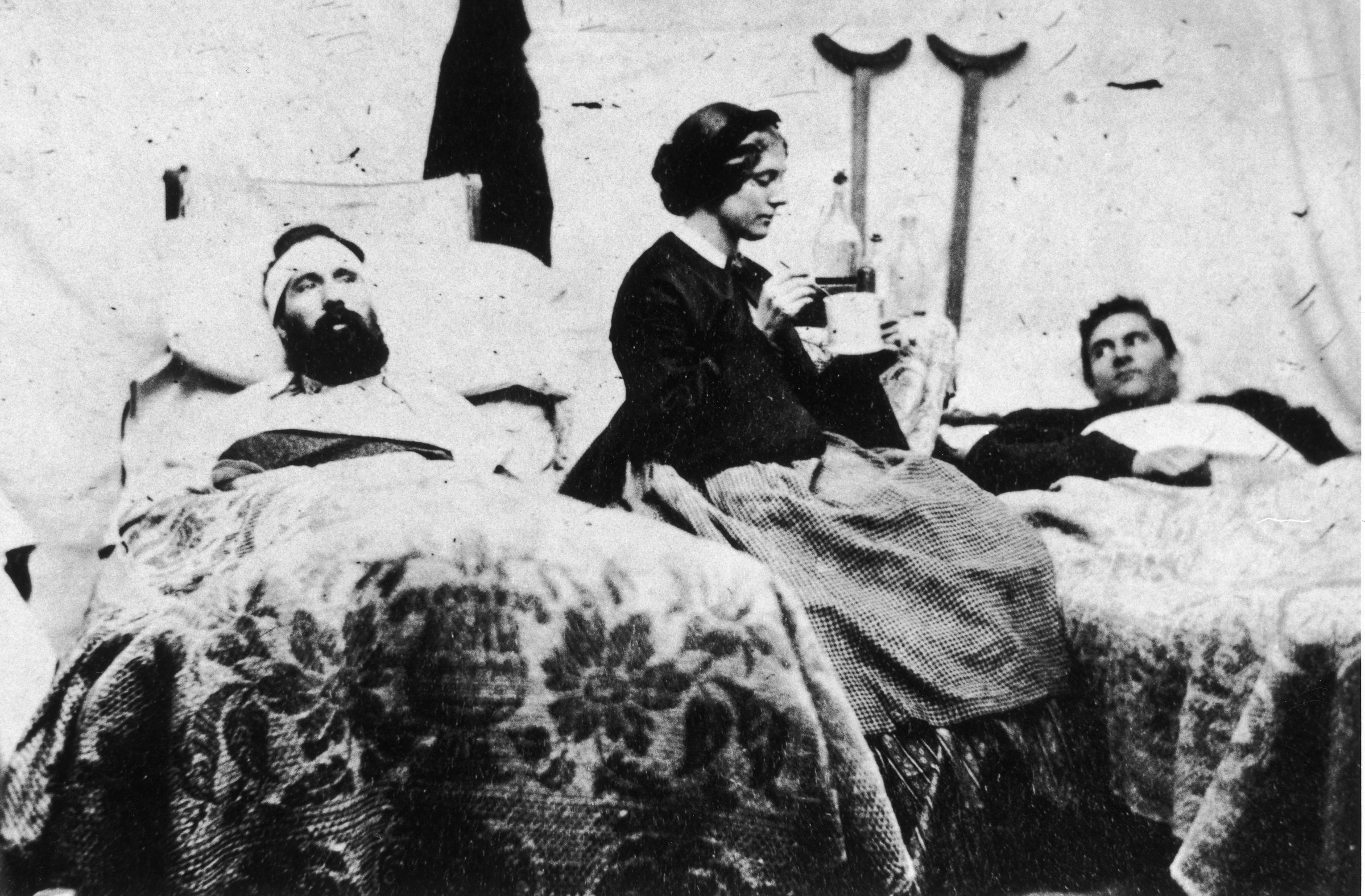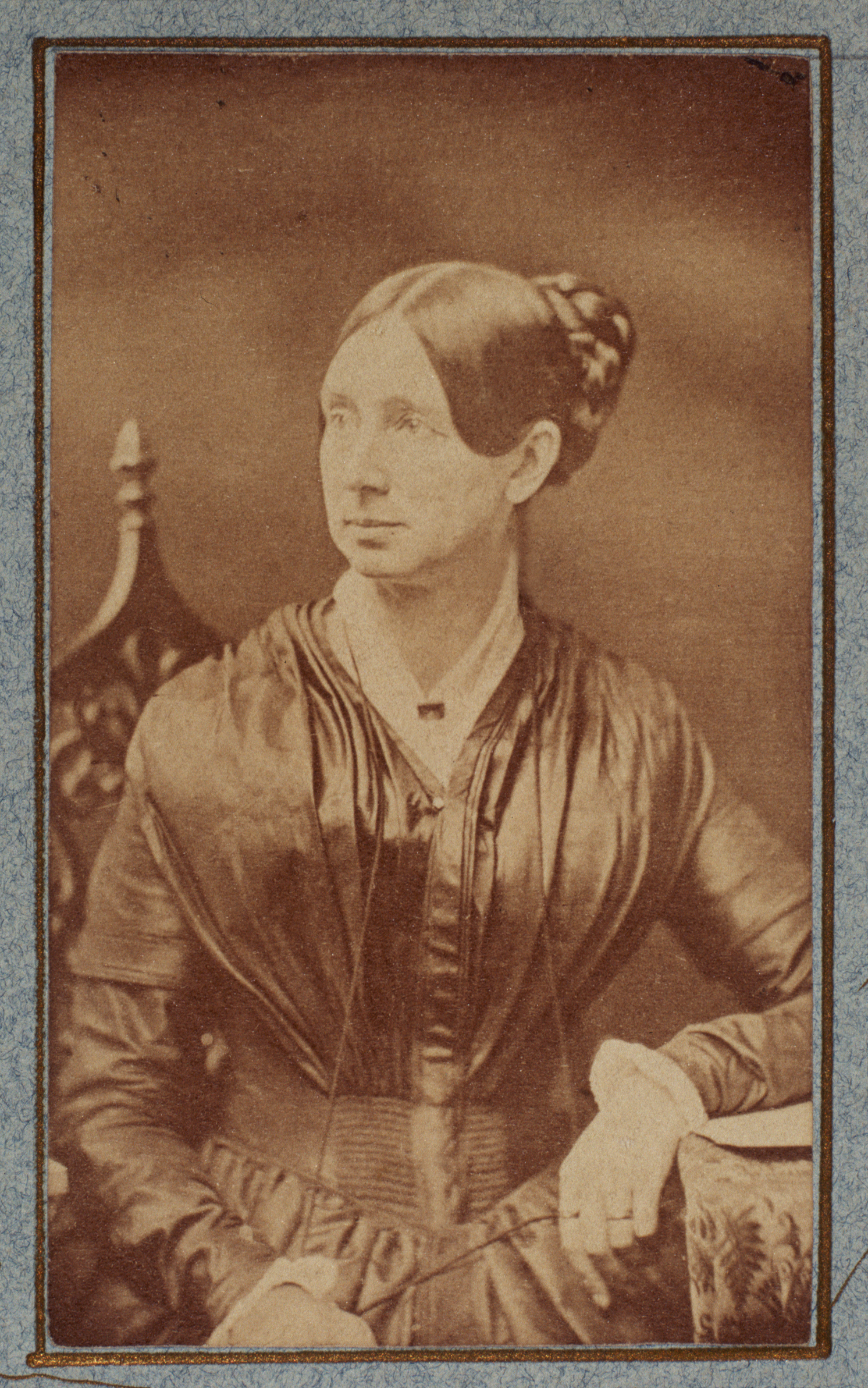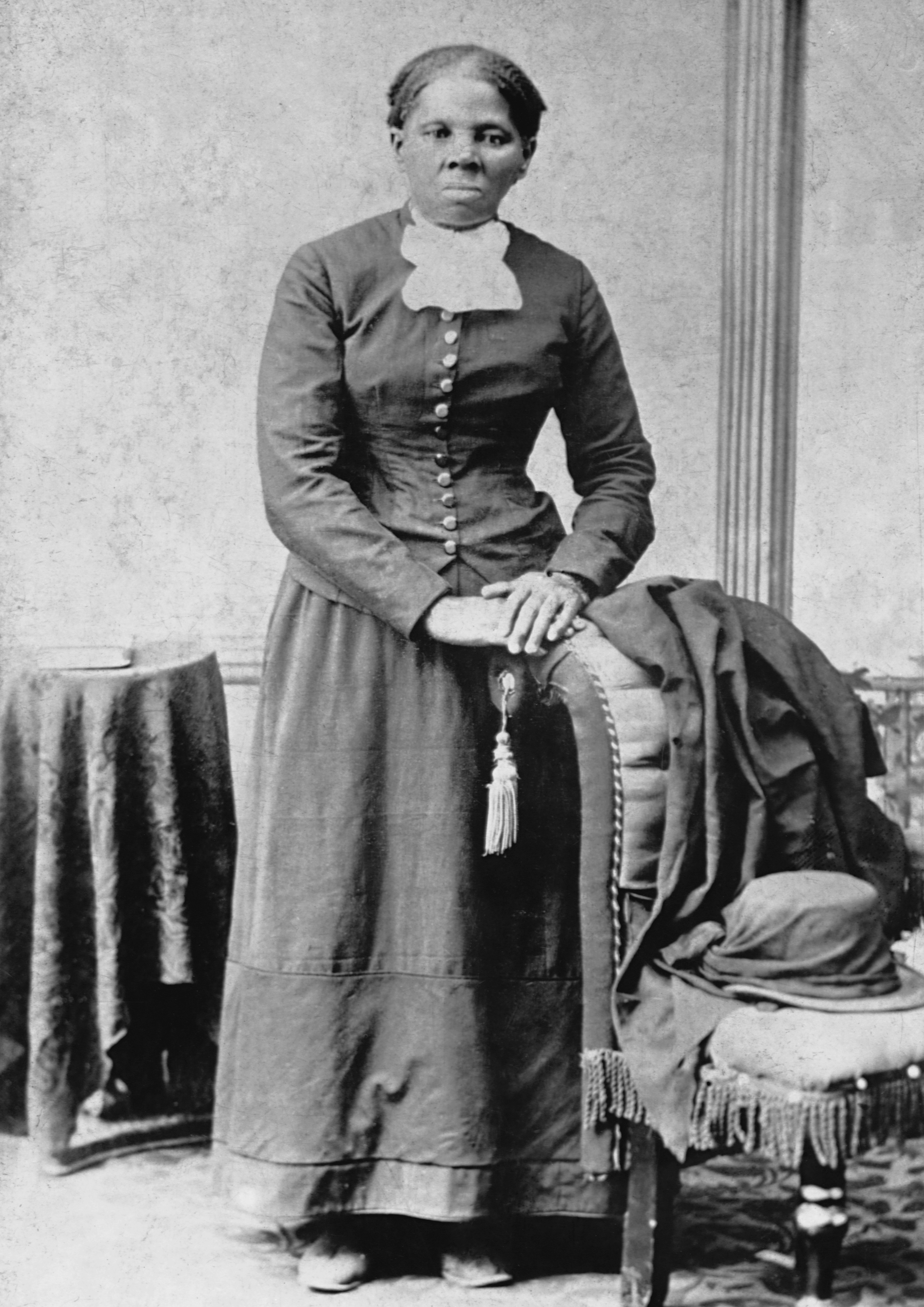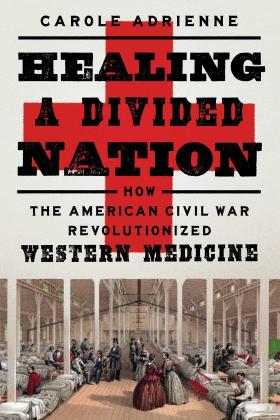
The 1850s and 1860s in America saw the rise of the “sentimental domestic idea.” Women were held up as examples of purity, piety, and submissiveness. In the American antebellum period, precise and strict rules were recommended for women’s socially acceptable and appropriate behavior.
But the Civil War would change the social, economic, and political landscape for women from every walk of American life—perhaps nowhere more so than in the field of nursing. Women demonstrated remarkable adaptability in the savagely altered wartime world, responding to the great need of the nation while acquiring and utilizing skills to ease the pain of the country.
“At the beginning of the war, a ‘nurse’ meant a soldier recovering in hospital from a wound or injury, untrained in healing, who aided doctors with miscellaneous duties,” Dr. Robert D. Hicks of the College of Physicians of Philadelphia explained. “The idea of women handling the bodies of men not related by family was unthinkable. By the end of the war, the term meant women who aided doctors by cleaning and feeding patients and occasionally assisting doctors in their surgeries and treatments.”
When the Civil War erupted, the governments of the divided country had not prepared for a lengthy and epic combat situation and its resulting casualties. Arrangements had not been made for transporting or treating tens of thousands of wounded and sickened men. The armies had no well-organized medical corps or field hospital plans. An officer’s wife might accompany her husband to the battlefield, or a mother attend to care for a wounded son or husband, and either might choose to remain and care for the increasing number of wounded.
The number of wounded soldiers multiplied, and epidemic diseases ravaged the troops. Newspaper reports about the lack of medical treatment and supplies in the army camps and hospitals inspired thousands of women to volunteer on the battlefields and hospitals. They began to appear seemingly everywhere, in both cities and remote locations to provide care to wounded or sick soldiers. They were not always welcomed by doctors. The Union Army in particular was opposed to having women onsite, believing that they were inexperienced, incompetent, and disorganized. Southern tradition found the intimate physical contact of nursing to be highly inappropriate for women.
It was true that most of the women probably had no prior experience with the kinds of devastating wounds and ailments the men were experiencing, but they were willing to learn and insistent on becoming part of the solution, arguing that the war “was as much a woman’s war as it was a man’s war.” The women of North and South pressed on in areas that had previously been closed to Victorian women, and it is estimated that more than 21,000 women served in Union military hospitals and a comparable number in the Confederacy, where 10% of the nursing women were African American. More than 3,000 women acted as paid nurses and many thousands more worked as unpaid volunteers. They were Catholic nuns, immigrants, formerly enslaved people, wives and daughters. The war created a way for women to take an active role in the relief effort from outside of the home and family, assume leadership roles in sanitary commissions, provide clerical assistance in government and business, and provide invaluable services in caring for wounded soldiers.

The Union formalized an arrangement in 1861, appointing Dorothea Dix as “Superintendent of Female Nurses of the Army.” Dix was among the American women who had traveled to Britain, Turkey, and Crimea to learn from the legendary Florence Nightingale, who was already transforming nursing in Europe. The American Civil War brought a new need and mission to the 59-year-old Dix, who had already made her mark as an advocate and reformer for prisoners and the mentally ill. Horrified by the large-scale violence, Dix took a train south to Washington, D.C., and gained a meeting with the U.S. secretary of war, Simon Cameron. She offered her services as a nurse to the Union Army, but Cameron, impressed with her assertiveness, organizational skills, and tenacious nature, appointed her the superintendent of Union Army nurses instead, a position she held until 1865.
Read more: How Florence Nightingale Paved the Way for the Heroic Work of Nurses Today
Dix powered through a field of resistance and during the course of the war appointed and arranged for the training of more than 3,000 nurses. As the first woman ever to serve at such a high level in a federally appointed position, she dove into the work, helping to set up field hospitals and aid stations. She was thought to have impossibly high standards for her nurses, but she continued to advocate for them to receive more formal training and increased work opportunities and responsibilities. She took good care of her nurses, the women who were extremely critical to advancing the role of nursing in the war and in medicine overall.
In the South, Captain Sally Louisa Tompkins, also known as the “Angel of the Confederacy,” became, at the age of 28, the first woman to be commissioned into the Confederate Army—also the first woman in American history to be formally inducted into the military. She ran a home-turned-hospital in Richmond. The medical practices of the private Robertson Hospital reflected Tompkins’s compassionate and meticulous dedication to cleanliness and care and its reputation began to spread. It was said that wounded soldiers in Richmond would beg for admittance to the Robertson hospital and commanders were known to send their most critical cases there. In order to avoid accusations of malingering and dodging of military service, Confederate President Jefferson Davis issued regulations requiring all hospitals to be under military command and the private hospitals were, for the most part, forced to close. In a stunning move that broke military and social tradition, he allowed Tompkins to continue her work and keep her excellent facility open by commissioning her as a captain in the Confederate States Army. She was then legally able to sustain the hospital’s operation and to obtain her medical supplies from military stores. Tompkins operated the Robertson Hospital throughout the war, treating 1,334 wounded men with only 73 deaths in its 45 months of existence, a survival rate of 94.5%, thought to be the highest of any Confederate military hospital during the war.

Although devotion and dedication to the cause of relief transcended social class and race to some degree, there was still inequality among women. Huge contributions to the effort included many unsung African American women, former slaves, contrabands, and freeborn, who also risked their lives on battlefields and helped to staff hospitals and hospital ships. Harriet Tubman, born into slavery, is primarily known for her roles as a courageous conductor on the Underground Railroad, a Union spy, and scout. She is less remembered for her influential role in nursing during the Civil War. When the fighting cast its ugly shadow over the country, she offered her services to the Union Army and traveled to South Carolina to provide desperately needed nursing care to Black soldiers and newly freed slaves. Highly skilled in the use of healing herbal medicine, her ability to cure dysentery was legendary.
Ann Bradford was born into slavery in Rutherford County, Tenn., in 1830. In 1863 she risked her life to escape the plantation and slavery, making her way to the Cumberland River and hiding there. At some point, she was taken aboard the Union ship U.S.S. Red Rover (a captured Confederate vessel turned hospital ship) and was first classified as “contraband,” a term for escaped slaves. The timing of Ann’s escape was fortuitous, as Union President Abraham Lincoln had recently signed the Emancipation Proclamation, and Bradford’s status was upgraded to “free woman.” She could legally leave the ship if she wanted but chose to stay on board, embracing a new life by formally becoming a volunteer with the Sisters of the Holy Cross of Notre Dame. Ann became the first African American woman to serve on a Union military vessel and was one of the first women ever to openly serve as a nurse in the U.S. Navy. She was one of five African American women—including Alice Kennedy, Sarah Kinno, Ellen Campbell, and Betsy Young—who served on that ship and were assigned the rank of “first-class boy,” a term usually applied to young men who worked as general-duty sailors. In a very short period of time, Bradford had transitioned from slavery to a free, paid worker. The five female former slaves on board performed a wide range of responsible duties, nursing the sick and wounded, cooking, cleaning, and laundering. Without formal medical training, they relied on the folk remedies from the plantations on which they had grown up and added their own insights and common sense based on their surprising new experiences.
During the Civil War and for several years afterward, the need for skilled professional nurses became more obvious and led to some hospitals instituting informal training. Students agreed to provide their nursing services to the hospital for free for two or three years and the hospital would offer lectures and clinical instructions to them, although the attaching of nurse training to hospitals rather than schools allowed and encouraged segregation in the health care system. For years, African American student nurses were refused admission to all such schools except those established by African American hospitals. The first formal schools of nursing in the United States opened in the year 1873 and were all based on Florence Nightingale’s model for the education of skilled nurses. Today in the United States, more than 800 schools offer degrees in nursing care to men and women of all races.
The desperate situations created by the Civil War prompted many women, Northern and Southern, nuns and laypeople, to break long-held traditions and social mores in order to move aggressively to the forefront of the war. Women stood up to years of preconceived ideas about their strength and tenacity. The war was bringing out the iron backbones and passionate contributions of many people whose passivity had always been encouraged, expected, and demanded.

Adapted from Healing a Divided Nation: How the American Civil War Revolutionized Western Medicine by Carole Adrienne, now available from Pegasus Books. Copyright © 2022 by Carole Adrienne.
More Must-Reads From TIME
- Dua Lipa Manifested All of This
- Exclusive: Google Workers Revolt Over $1.2 Billion Contract With Israel
- Stop Looking for Your Forever Home
- The Sympathizer Counters 50 Years of Hollywood Vietnam War Narratives
- The Bliss of Seeing the Eclipse From Cleveland
- Hormonal Birth Control Doesn’t Deserve Its Bad Reputation
- The Best TV Shows to Watch on Peacock
- Want Weekly Recs on What to Watch, Read, and More? Sign Up for Worth Your Time
Contact us at letters@time.com